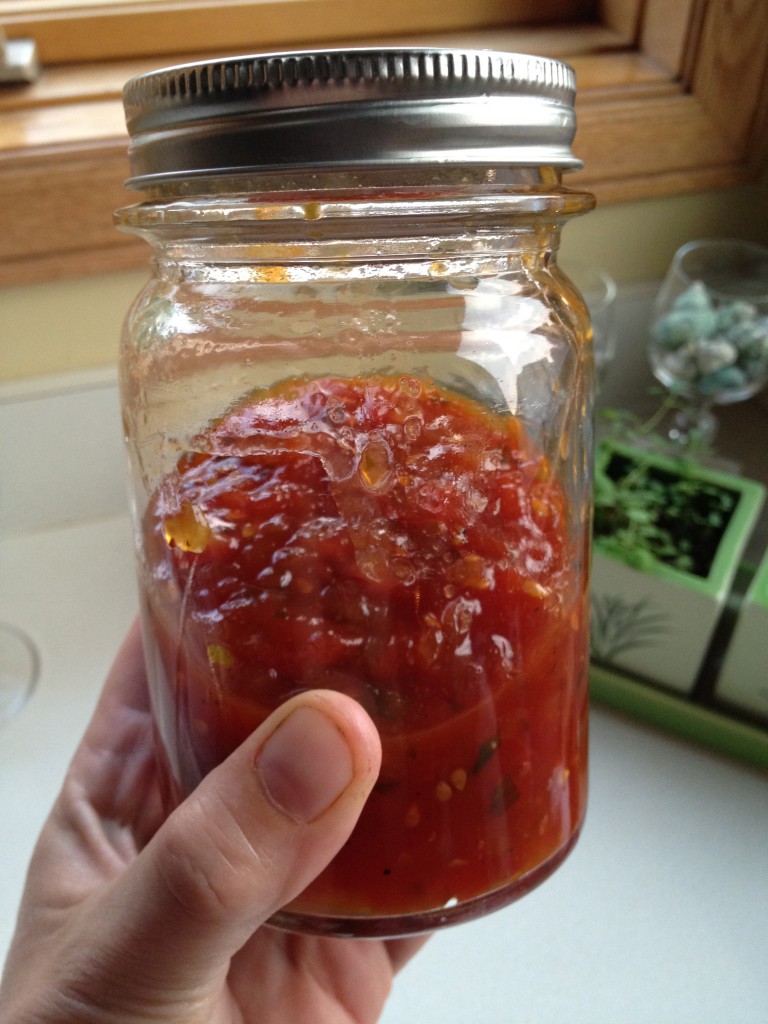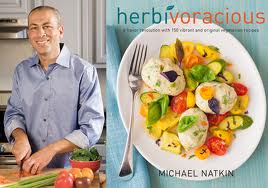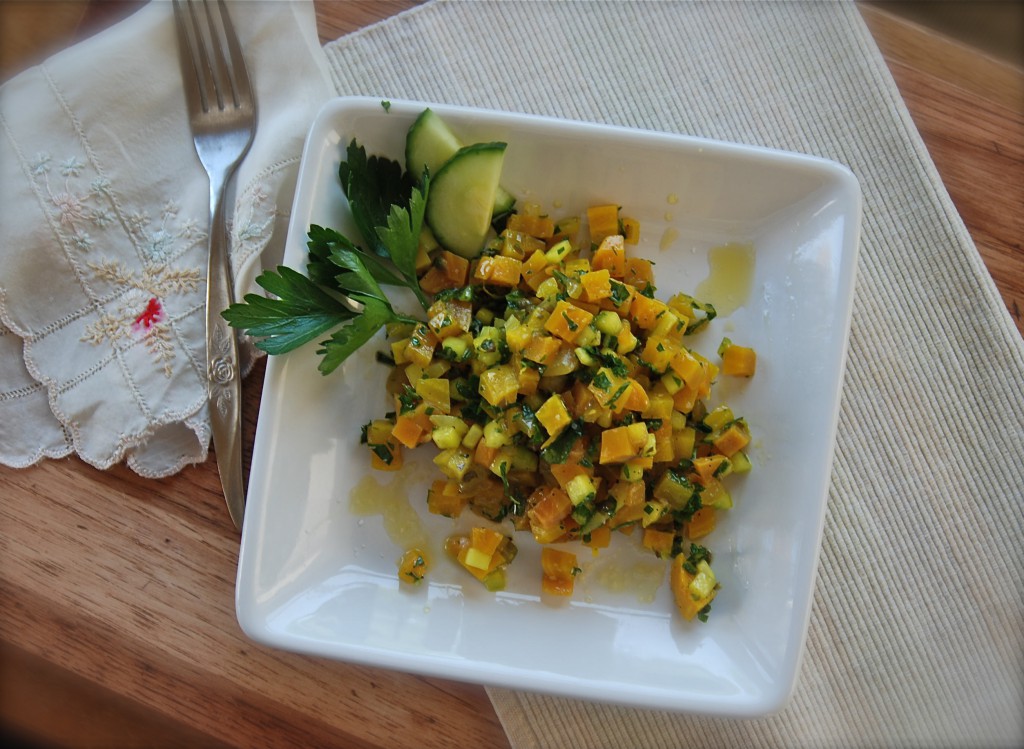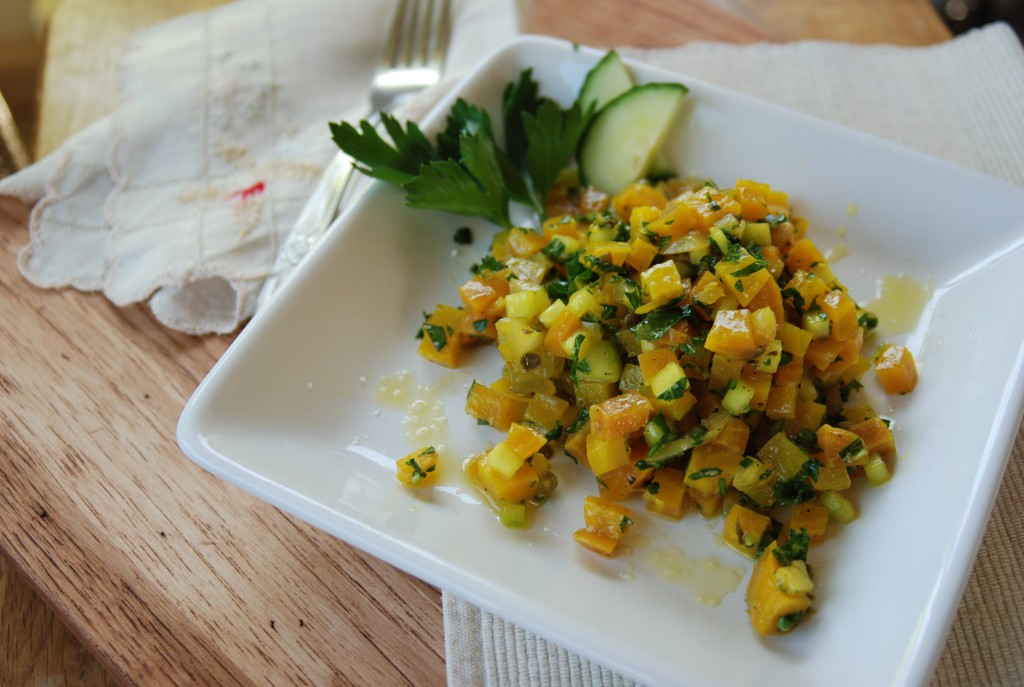I’ve never really been a fan of ketchup, and can’t recall the last time I really ate it. Maybe in college, dragging a thick and steaming hot onion ring through a plate of ketchup and mustard swirled together, or possibly on a bratwurst, back in some far away and hazy memory but it’s been a really long time. Griffin likes it, Mike won’t touch it.
Then I discovered tomato jam.
From Herbivoracious, my current cookbook love by Michael Natkin, I saw this condiment in the last pages of the book and was intrigued by it, then read a really positive and glowing review of the same recipe on another food blog, sealing the deal. With a few imperfect tomatoes and a bit of time to simmer the jam, the first time I scooped it on to my plate and tried it was a revelation. I frankly didn’t know what to expect, but what landed on my tongue was unlike anything I’d tasted before. It was thick and bursting with tomato flavor, a bit sweet but not at all syrupy or tinny like ketchup. And as soon as the last bit was scraped from the jar, I knew I needed to have more.
And the thing is, this is a perfect recipe for this time of year. You don’t need lovely tomatoes to make it because you cook them down to a thick jam, so all those ones on the vine that don’t make it to the plate, the ones that maybe split in the heat, or have one side that won’t ripen; think of the bushels of tomatoes at the Farmers Markets that are there for canning too, how perfect they’d be to make this extraordinary condiment. It goes so well on burgers, sausages, hot dogs, veggie patties, on top of grilled vegetables or spread on bread for your sandwich. You might think you need to hide it in the fridge so your spouse won’t eat the last of it. (ahem…. not that I did that or anything…. just sayin’) It’s a quintessential summer treat, making your cook-out more refined and grown up. Save the syrupy sweet ketchup for the kids in your life. This tomato jam?? It’s ketchup with a Ph.D. And that’s for us.
Tomato Jam
1-1/2 lbs of fresh tomatoes, peeled
1/2 a small onion, diced
3/4 c. sugar
2 T. lemon juice
1 T. kosher salt
2 T. chopped fresh rosemary
Pinch of saffron threads
Pinch of crushed red pepper
Fresh ground black pepperIn a medium saucepan, combine all the ingredients except the black pepper. Bring to a boil, reduce the heat and allow to simmer until the jam has thickened, about an hour or more. Stir often while it simmers.
From Herbivoracious.
KATE’S RECIPE NOTES:
This cooks for a looooooonnnggg time. A very long time. The first batch I made took well over an hour to cook down, and the second round I made was a double recipe and that one cooked for over two hours. Most of that time is pretty hands off though; you stir every once in a while but you are not tied to the stove by any means.
I’m not a huge fan of rosemary. WHAT?? I know. But I’m not. So I subbed in lemon thyme, oregano and parsley and who would even know that this wasn’t exactly how it should be made?? It’s glorious this way. Experiment with your own fanciful herb combinations. For both batches I reduced the sugar, adding only 1/3 of a cup for a single batch, 1/2 cup for the double batch. I also added lemon zest to the mix because when you’ve got lemon juice, you need lemon zest, as far as I’m concerned. But that’s just me. The book says to use up the jam in three days, and although I’m certain I could have done that if I tried, it lasted for more than a week in my fridge just fine.
I’m debating an attempt to water bath process some of this so I can have it all winter long. It’s probably going to happen. Probably.



